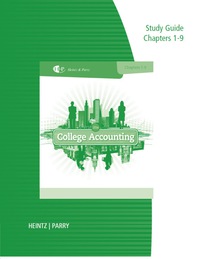Case Study 2: Demand-Baced Dynamic Pricing for the Super Bowl Med that daily A study that compared hotel performance during the peak days of the 2012 Mardi Gras in New Orleans, Louisiana, and the time period leading up to the Super Bowl (which was played in New Orleans on February 3, 2013) showed that the Super Bowl drew much higher rates despite similar occupancy levels. Upscale hotels had an average daily rate of $460 during the Super Bowl, compared with an ADR of $265 for Mardi Gras 2012. A similar impact was evident for midscale properties-$392 for a night's stay for the Super Bowl and $273 for Mardi Gras. The rate gaps are significant. (It's interesting to note that the midscale hotels during the Super Bowl had a higher ADR than the upscale hotels for Mardi Gras.) This differential indicates that the clientele for Mardi Gras has a distinctly different purchasing power and buying behavior than the clientele for the Super Bowl. Hotels in New Orleans reported a boost in weekly performance results during the week of 27 January-2 February 2013 (the week leading up to the Super Bowl). accerding to data from STR. The markets occupancy rose 24.5 percent to 71.1 percent, its average daily rate jumped 125.9 percent to $289.03, and its RevPAR increased 181.3 percent to $205.59. The New Orleans hotel industry also benefited from weekend events leading up to Super Bowl benefited from weekend events leading up to Super Bowl XLVII. Overall, during that same time period, the U.S. hotel industry's occupancy rate was up 3.6 percent to 53.5 percent, ADR rose 6 percent to $106.64, and RevPAR increased 9.8 percent to $57.06. Discussion Question Is what the New Orleans hotels were doing acceptable practice during the two high-profile citywide events of Mardi Gras and the Super Bowl? Were they practicing revenue management or were they price-gouging? 2. On July 30: There is exciting news: the Major League Soccer franchise of the city has just clinched a spot in the playoffs. The news travels fast: it is all over the sport shows on television, it is the headline news on the sports pages in all local papers, and it is all over the internet. The first game in the elimination round will be against the Los Angeles Galaxy, which features the world-famous superstar Steven Gerrard in its lineup. The first leg of the home-and-home series is going to be played in the local stadium on August 25. All the hotels in city are filling up fast and phones with reservation inquiries are ringing off the hook at the Sport. The hotel's website has crashed as the booking engine could not handle the sudden increase of volume. Things became hectic in a matter of hours at the Hotel Sport. What rate should the revenue manager approve to quote now for group reservation inquiries for the weekend of August 24-26? Are there any stay control measures that should be considered? Case Study 1: Playoff Time Med that Hotel Sport is a 250-room independent suburban hotel located close to a sports stadium. The stadium has a capacity of 25,000 and it serves as the home field of the local Major League Soccer (MLS) team, while also hosting college football games on occasion. Hotel Sport is a select service property in the midscale category. Its rate structure is simple: Rack $190 Weekend $159 Low season/Government $140 Groups (of 15+) $130 BAR $120 Late August is traditionally low season in the hotel. Demand usually picks up after Labor Day, when area businesses and government offices are back in full swing The hotel has more group business during the summer and it faces less transient demand The sell rate in late August is the $140 Low Season tale Sion Hosp. then laun










